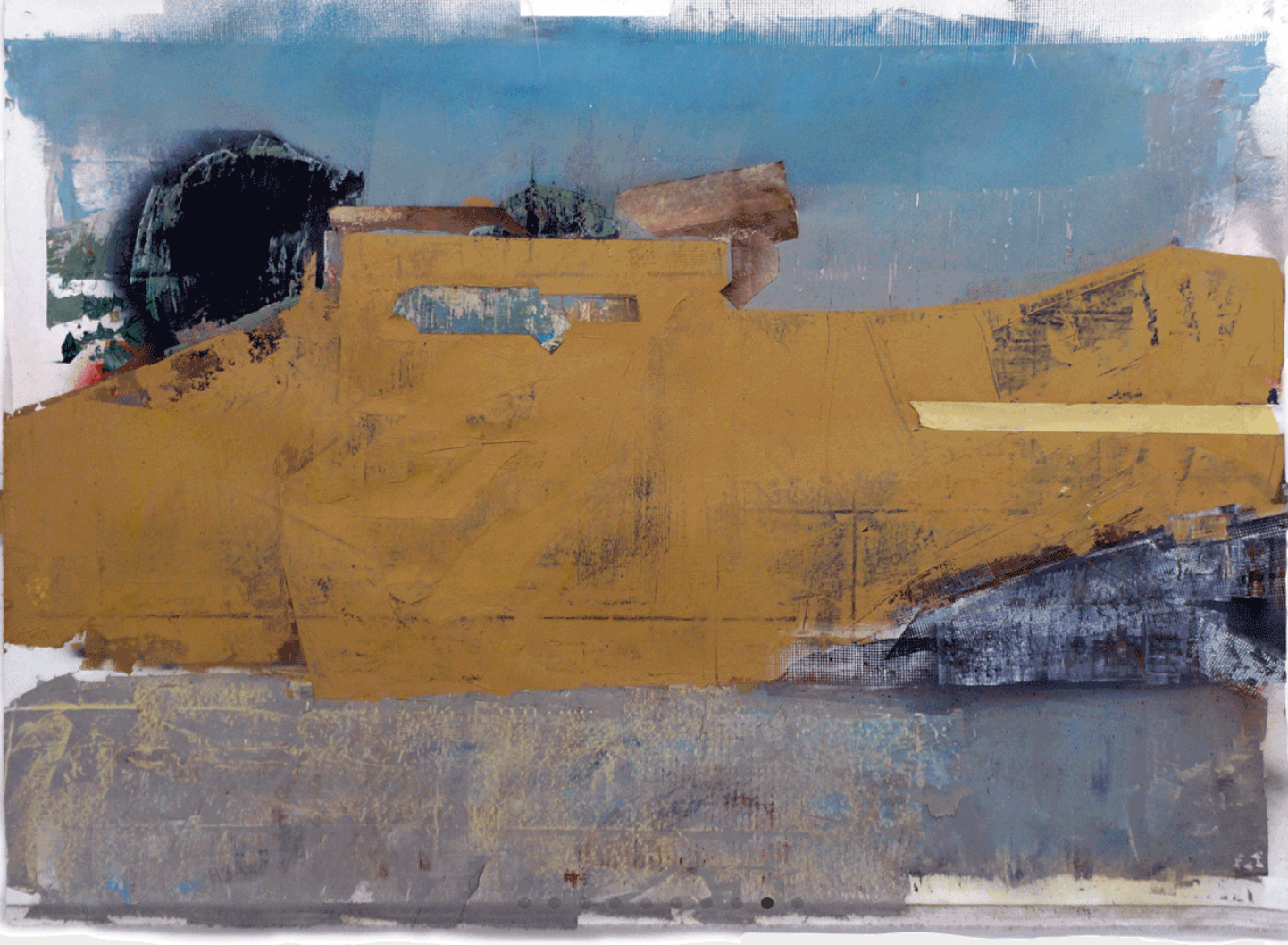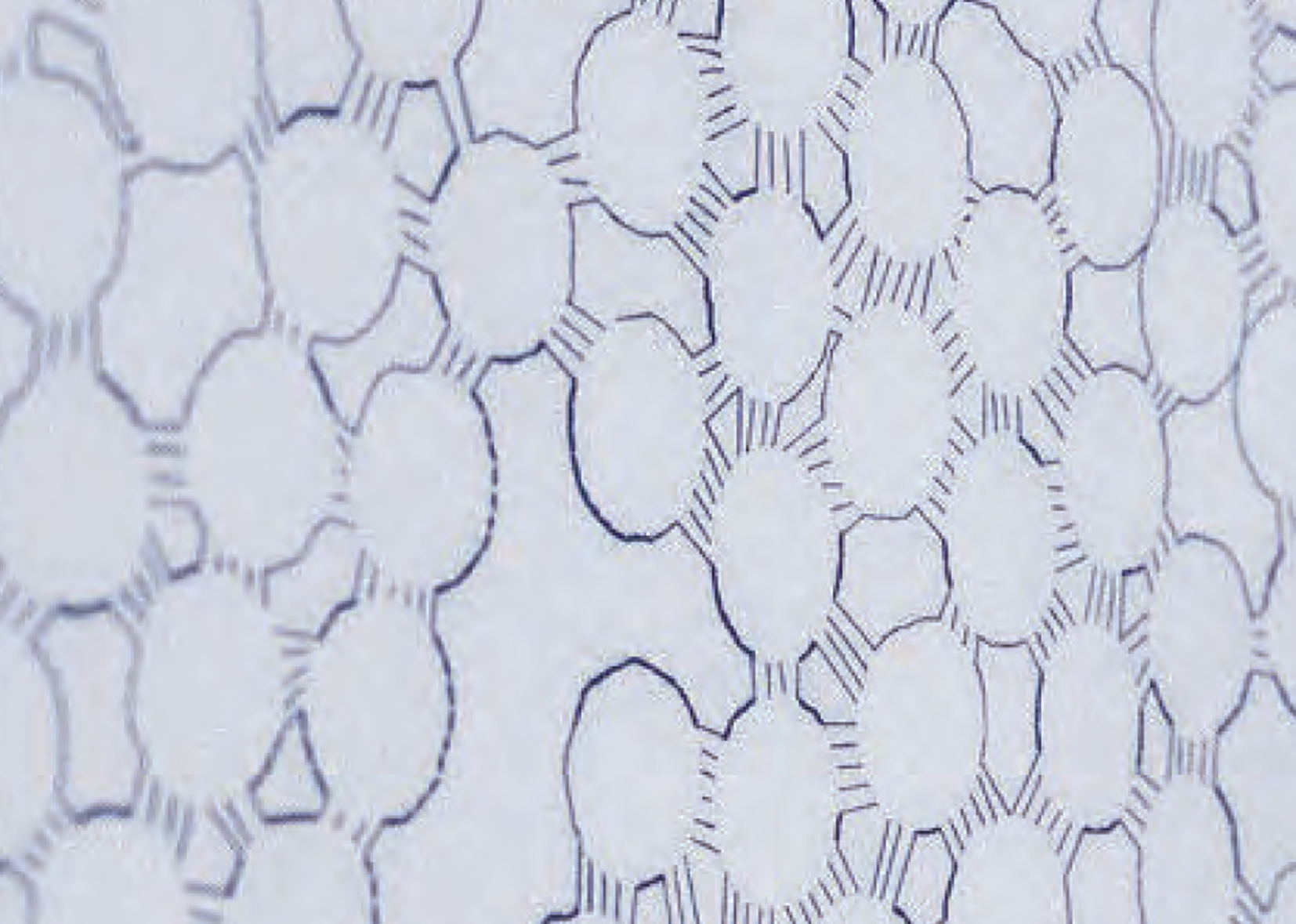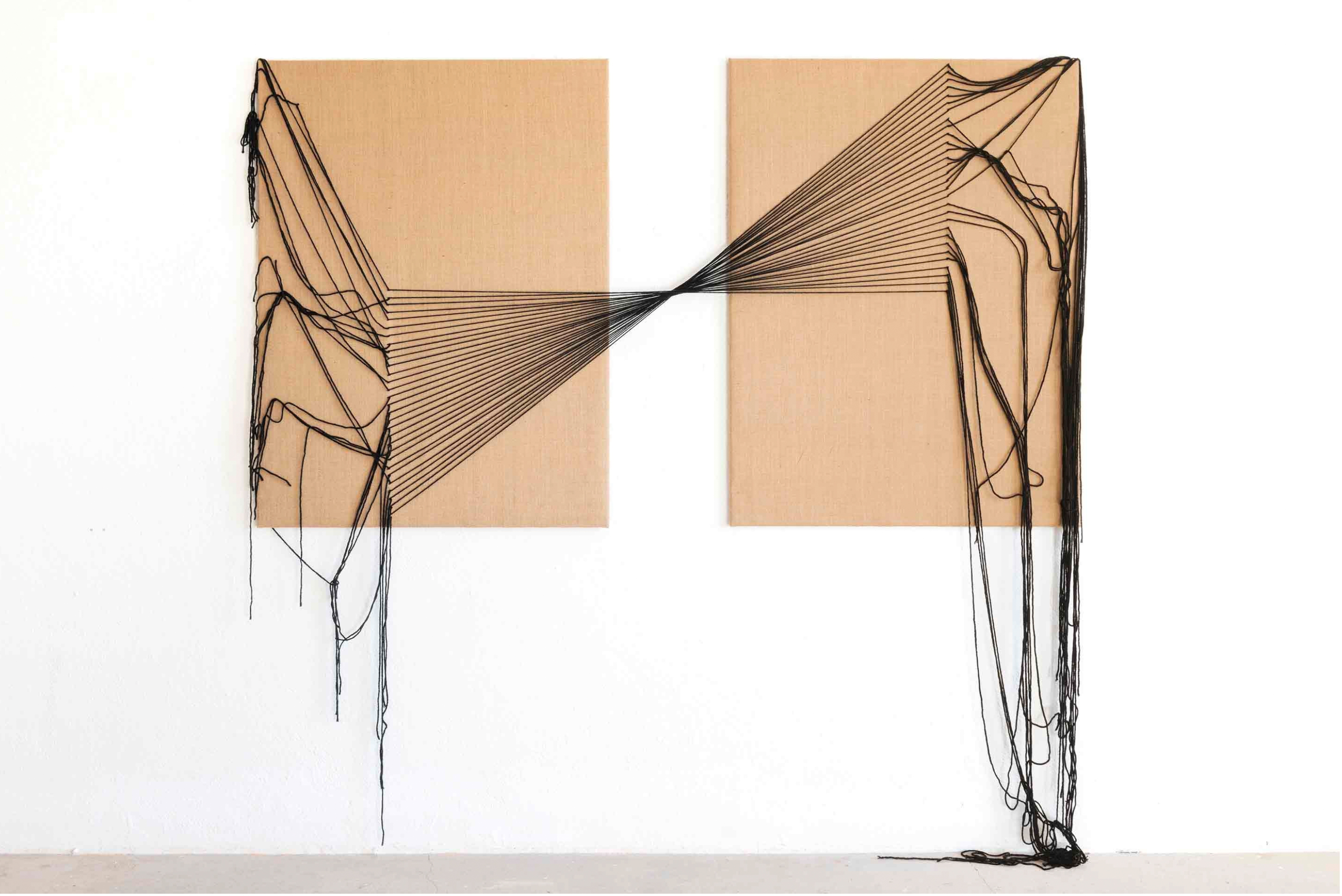Die Dinge des Alltags und die Kunst / Quotidian things and art
26.09.–24.10.2020
LEWEIS wesen-t-lich (essential)
The artists Renate Lerch and Jacqueline Weiss enter into dialogue with places and people as the duo LEWEIS.
Attics, greenhouses, village squares and trenches become a studio for the artist duo for a period of time. Stories from then and now are processed materially and medially into new, surprising worlds that LEWEIS can only adumbrate at the beginning of their projects.
In the attic of the Haus zur Glocke, an installation develops in which the “Luftraumbrücke” (air space bridge) by the architects Weyell/Berner will be taken up as connecting element between the individual positions.
With a camera obscura and fresne lenses, the outside world is partially steered into the extended interior. Protagonists from magazines of the 60s appear as photographs within the scenery; projections, as moving images in an old television or as airspace creatures, alienated, reinterpreted, and scenically connected.
Max Bottini, natura morta – the unadorned daily grind
Since 2001, Max has photographed his face every day. By now, there are almost 7000 self-portraits. Whether at home or on the go, the Nikon Cool Pix camera with fold-out viewfinder accompanies the artist everywhere. Thus, image backgrounds alternate randomly and in irregular succession. The captions do not follow a regular schedule, but are made dependent on occasion during the course of the day. Working on the self-portraits is an examination of his own offense, which will come to an end with the completion of his life.
Parallel to the daily portraits, the artist has been running a small pocket agenda for years. The content of the agenda is limited to twelve double-sided monthly sheets, wherein a daily line assigned to each day runs across both sides of the page. On this scarce area there are entries of various kinds, providing unspectacular and sober insights into past lifetimes. In the Haus zur Glocke, the artist grants insight into his collection for the very first time. His intention is – taking into account the premises – to show the interplay between the daily portraits and agenda entries as well as the energy expenditure associated with them.
Veranstaltungen / Events
- Opening Die Dinge des Alltags und die Kunst / Quotidian things and art
- Die Dinge des Alltags und die Kunst / Quotidian things and art – Guided tour with Anna Bürkli
- Salon talk - Die Dinge des Alltags und die Kunst / Quotidian things and art
- Soup by LEWEIS for the closing of Die Dinge des Alltags und die Kunst / Quotidian things and art
![[Translate to English:] LEWEIS (Renate Lerch, Jacqueline Weiss), wesen-t-lich, Installation im Haus zur Glocke (Dachstock), 2020 (Foto: Kaspar Schweizer) [Translate to English:] LEWEIS (Renate Lerch, Jacqueline Weiss), wesen-t-lich, Installation im Haus zur Glocke (Dachstock), 2020 (Foto: Kaspar Schweizer)](/fileadmin/_processed_/1/a/csm_20200928_P0027_0325_952-web-medium_7dcff35af1.jpg)
![[Translate to English:] LEWEIS, wesen-t-lich, Installation im Haus zur Glocke (Dachstock), 2020 (Foto: Kaspar Schweizer) [Translate to English:] LEWEIS, wesen-t-lich, Installation im Haus zur Glocke (Dachstock), 2020 (Foto: Kaspar Schweizer)](/fileadmin/_processed_/2/e/csm_20200928_P0027_0316_952-web-medium_aba5c9d835.jpg)
![[Translate to English:] LEWEIS, wesen-t-lich, Detail der Installation im Haus zur Glocke (Dachstock), 2020 (Foto: Kaspar Schweizer) [Translate to English:] LEWEIS, wesen-t-lich, Detail der Installation im Haus zur Glocke (Dachstock), 2020 (Foto: Kaspar Schweizer)](/fileadmin/_processed_/c/7/csm_20200928_P0027_0330_952-web-medium_04f74cfebd.jpg)
![[Translate to English:] LEWEIS, wesen-t-lich, Installation im Haus zur Glocke (Eingangsraum), 2020 (Foto: Kaspar Schweizer) [Translate to English:] LEWEIS, wesen-t-lich, Installation im Haus zur Glocke (Eingangsraum), 2020 (Foto: Kaspar Schweizer)](/fileadmin/_processed_/f/6/csm_20200928_P0027_0170_952-web-medium_ec6551b946.jpg)
![[Translate to English:] LEWEIS, wesen-t-lich, Detail der Installation im Haus zur Glocke (Eingangsraum), 2020 (Foto: Kaspar Schweizer) [Translate to English:] LEWEIS, wesen-t-lich, Detail der Installation im Haus zur Glocke (Eingangsraum), 2020 (Foto: Kaspar Schweizer)](/fileadmin/_processed_/f/f/csm_20200926_P0027_0051_952-web-medium_2df292fbcb.jpg)
![[Translate to English:] LEWEIS, wesen-t-lich, Detail der Installation im Haus zur Glocke (Eingangsraum), 2020 (Foto: Kaspar Schweizer) [Translate to English:] LEWEIS, wesen-t-lich, Detail der Installation im Haus zur Glocke (Eingangsraum), 2020 (Foto: Kaspar Schweizer)](/fileadmin/_processed_/8/5/csm_20200928_P0027_0202_952-web-medium_7fcca7def3.jpg)
![[Translate to English:] Max Bottini, natura morta – der ungeschönte Alltag, Installation im Haus zur Glocke, 2020 (Foto: Kaspar Schweizer) [Translate to English:] Max Bottini, natura morta – der ungeschönte Alltag, Installation im Haus zur Glocke, 2020 (Foto: Kaspar Schweizer)](/fileadmin/_processed_/4/1/csm_20200928_P0027_0214_952-web-medium_e593a553d4.jpg)
![[Translate to English:] Max Bottini, natura morta – der ungeschönte Alltag, Installation im Haus zur Glocke, 2020 (Foto: Kaspar Schweizer) [Translate to English:] Max Bottini, natura morta – der ungeschönte Alltag, Installation im Haus zur Glocke, 2020 (Foto: Kaspar Schweizer)](/fileadmin/_processed_/e/a/csm_20200928_P0027_0243_952-web-medium_4ad868d975.jpg)
![[Translate to English:] Max Bottini, natura morta – der ungeschönte Alltag, Detail der Installation im Haus zur Glocke, 2020 (Foto: Kaspar Schweizer) [Translate to English:] Max Bottini, natura morta – der ungeschönte Alltag, Detail der Installation im Haus zur Glocke, 2020 (Foto: Kaspar Schweizer)](/fileadmin/_processed_/d/5/csm_20200928_P0027_0308_952-web-medium_f50e148a06.jpg)



